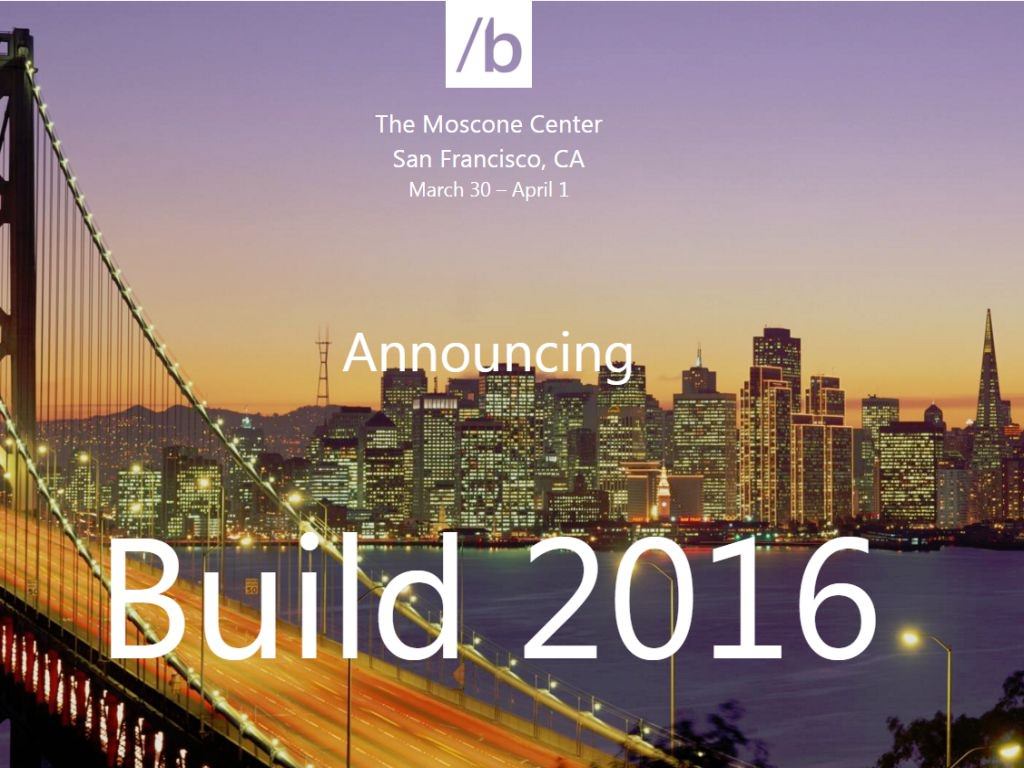This week, Microsoft will hold its Build developer conference in San Francisco, kicking off the now customary season of developer events that will continue with Google’s I/O in May and Apple’s WWDC in June. Last year’s Build covered a number of bases, but Windows 10 was clearly the focus. The challenge at this year’s Build is to demonstrate that momentum is – ahem – building around Windows 10, in the face of several indicators that things aren’t going as well as the company would have liked since last year’s event. Incidentally, this is something we talked about briefly during this week’s podcast as well.
Counter-indicators abound
At least year’s Build, Microsoft set a goal of 1 billion Windows 10 devices of all kinds within 2-3 years of the launch of the operating system. At this point, the most recent number Microsoft has provided for Windows 10 adoption is 200 million as of January 2016, roughly six months after launch. That’s a decent start, but it’s not earth-shattering – Microsoft will need to demonstrate enterprise adoption in particular will accelerate significantly over the coming months as businesses prepare for upgrades and new deployments if it’s to meet that longer-term goal.
A major thrust of the Windows 10 push, especially when it comes to developers, has been the Universal Apps concept. So this is another area where Microsoft needs to demonstrate to developers that users want these apps and to users that developers are creating them. However, here too the evidence of momentum is scarce – relatively few new major Windows 10 universal apps that truly run on mobile and PCs have been created since last year and Windows continues to run months or years behind other platforms when it comes to attracting major apps while some apps don’t ever arrive on the platform. Just in the past few weeks, major partner HERE has announced it’s pulling its apps from Windows 8 and Windows 10 — not exactly the message Microsoft wants to be sending about the platform. In fairness, HERE’s mapping data is available through the preinstalled maps applications on Windows but, even so, it’s a vote of non-confidence in the attractiveness of Windows as a development platform.
Thirdly, Microsoft made much at last year’s event of the tools it would make available to developers to enable them to port apps from other platforms, notably older versions of Windows as well as iOS and Android. Since that time, Microsoft has made a little progress on two of these tools but has killed off the Android porting tool. The iOS bridge is available to developers but the .Net and Win32 tool (codenamed Project Centennial) won’t see the light of day for some time yet. Microsoft can’t afford to go so long between the announcement of these tools and their availability and killing off tools before they’re even launched doesn’t inspire confidence either. The logic for killing the Android bridge is sound – most Android app developers also have iOS apps and, as such, could simply use the iOS bridge – yet that’s not universally true.
The messages Microsoft needs to send
Given these counter-indicators, Microsoft has to ensure the messages coming out of Build 2016 are:
- Adoption of Windows 10 by consumers continues to expand rapidly – perhaps we’ll see a new milestone around 250 million devices in use announced
- Adoption of Windows 10 by developers is growing – we need some numbers around how the Universal app approach is stimulating development for both PCs and mobile devices
- The range of devices running Windows 10 continues to expand. HoloLens has been an interesting though not yet in-market example of a non-traditional device running Windows 10. Microsoft needs to continue to highlight both traditional devices and new devices running the platform to demonstrate the breadth of its applicability
- Microsoft continues to support developers beyond Windows 10, both by making it easier for them to bring existing apps to Windows and by enabling them to develop for other platforms through tools such as Azure and recently-acquired Xamarin
If developers don’t leave Build feeling confident about these trends and the momentum around Windows 10 in general, Microsoft will have failed in its mission. Windows 10 is at a critical time in its life when it needs to demonstrate real traction with both customers and developers, and the conference can either help or hinder it in that effort.
